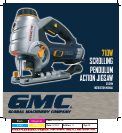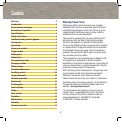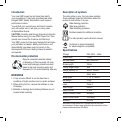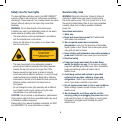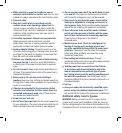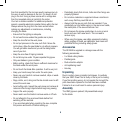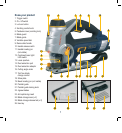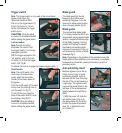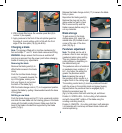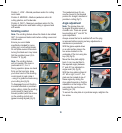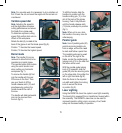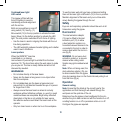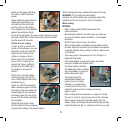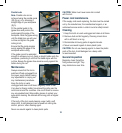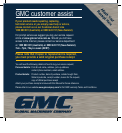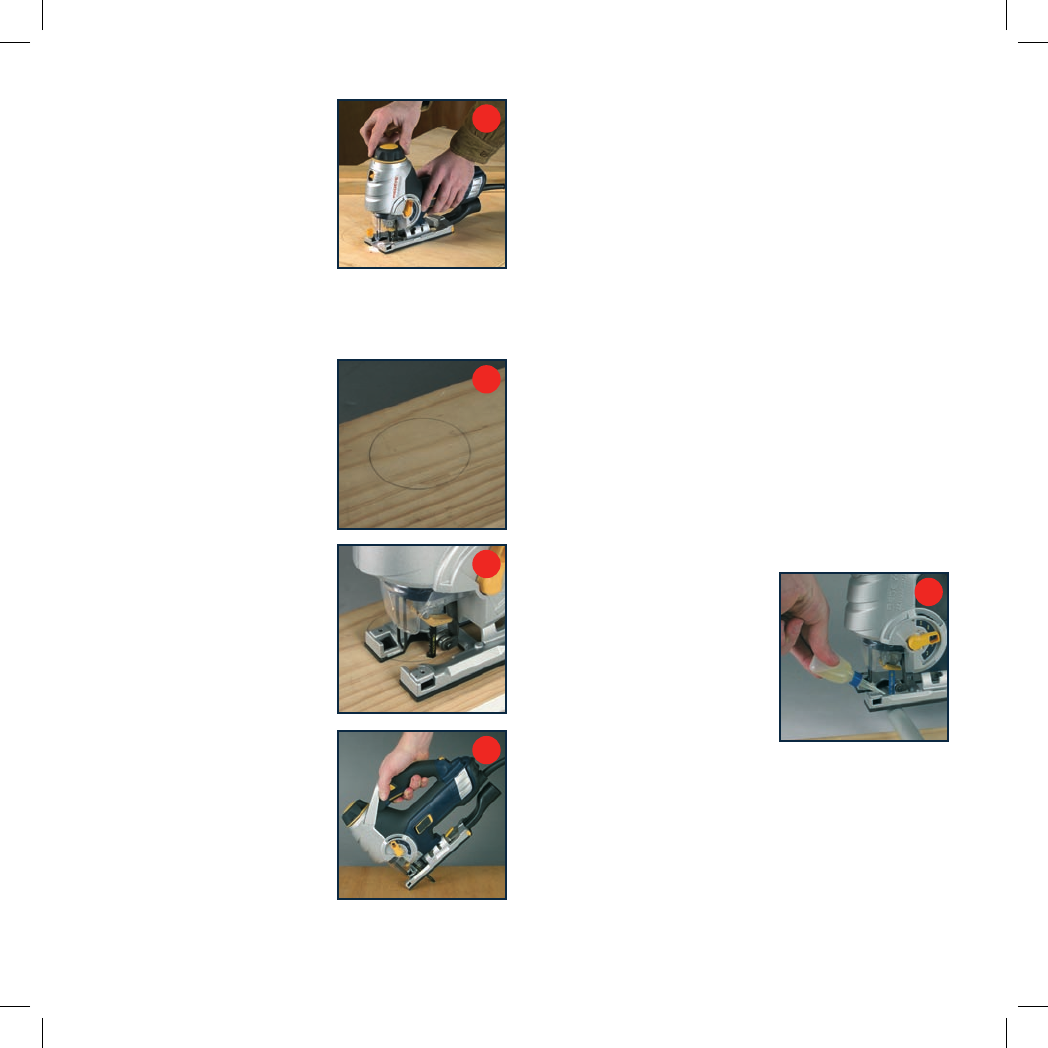
13
Switch on the jigsaw and allow
the blade to reach maximum
speed.
Slowly guide the jigsaw forward,
building up speed as you go,
with one hand on the handle
and the other on the scrolling
knob, keeping the shoe plate flat
against the workpiece (fig b).
Do not force the jigsaw. Use only enough pressure to keep
the blade cutting. Do not force the cutting, allow the blade
and the saw to do the work.
Pocket & curve cutting
In order to start a cut from the
centre of the workpiece, you can
either drill a hole and insert the
blade into the hole then start
cutting, or plunge cut (fig c).
When using the hole method,
use a 10mm or larger drill to
ensure that there is sufficient
clearance for the blade (fig d).
To plunge cut, proceed as
follows.
Tilt the tool on the front edge
of the shoe plate (18) with the
point of the blade just above the
workpiece (fig e).
Switch on, wait for the blade to
reach maximum speed, hold the
front edge of the shoe plate (18)
securely against the workpiece
and slowly lower the rear of the
saw so that the blade penetrates
the workpiece.
When the shoe plate is flush
with the surface of the workpiece,
proceed with cutting in the normal manner.
When cutting tight curves, reduce the speed of the saw.
WARNING. Do not move the saw forward
along its cut until the blade has completely entered the
material and the shoe comes to rest on its surface.
Metal cutting
NOTES.
• When cutting metal ALWAYS clamp down the
metal workpiece.
• Be extremely careful to move the saw very slowly as
you cut. Use slower speeds (Position 1 on the speed
controller).
DO NOT twist, bend or force the blade.
• When cutting metals, a suitable cooling/cutting oil must
be used. Squirt the lubricant onto the blade or workpiece
at regular intervals during cutting in order to reduce wear
on the blade.
• If the saw jumps or bounces as you cut, change to a
blade with finer teeth.
• If the blade begins to clog when cutting soft metal,
change to a blade with coarser teeth.
• For easier cutting, lubricate
the blade with a stick of cutting
wax (if available) or cutting oil
when cutting steel (fig f).
• Thin metal should be
sandwiched between two
pieces of wood or tightly
clamped on a single piece
of wood (wood on top of the
metal). Draw the cut lines or design on the top
piece of wood.
• When cutting aluminum extrusion or angle iron, clamp
the work in a bench vice and saw close to the vice jaws.
• When sawing tubing with a diameter larger than the
blade is deep, cut through the wall of the tubing and then
insert the blade into the cut, rotating the tube as you saw.
e
f
c
d
b
e



